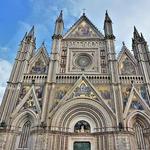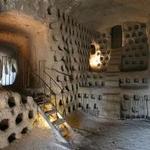Stefanie & Katsin


Things To Do

Pozzo di San Patrizio
The Pozzo di San Patrizio (English: "St. Patrick's Well") is a historic well in Orvieto, Umbria, central Italy. It was built by architect-engineer Antonio da Sangallo the Younger of Florence, between 1527 and 1537, at the behest of Pope Clement VII who had taken refuge at Orvieto during the sack of Rome in 1527 by the Holy Roman Emperor Charles V, and feared that the city's water supply would be insufficient in the event of a siege. The well was completed in 1537 during the papacy of Pope Paul III. The name was inspired by medieval legends that St. Patrick's Purgatory in Ireland gave access down to Purgatory, indicating something very deep.

Duomo di Orvieto
Orvieto Cathedral (Italian: Duomo di Orvieto; Cattedrale di Santa Maria Assunta) is a large 14th-century Roman Catholic cathedral dedicated to the Assumption of the Virgin Mary and situated in the town of Orvieto in Umbria, central Italy. Since 1986, the cathedral in Orvieto has been the episcopal seat of the former Diocese of Todi as well. The building was constructed under the orders of Pope Urban IV to commemorate and provide a suitable home for the Corporal of Bolsena, the relic of miracle which is said to have occurred in 1263 in the nearby town of Bolsena, when a traveling priest who had doubts about the truth of transubstantiation found that his Host was bleeding so much that it stained the altar cloth. The cloth is now stored in the Chapel of the Corporal inside the cathedral.

Museo Archeologico Nazionale di Orvieto
Orvieto National Archaeological Museum. The museum offers an exhibition of Etruscan pieces discovered during recent archaeological digs around Orvieto. Many pieces were found in the northern section of the Crocifisso del Tufo Necropolis
